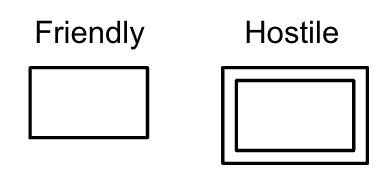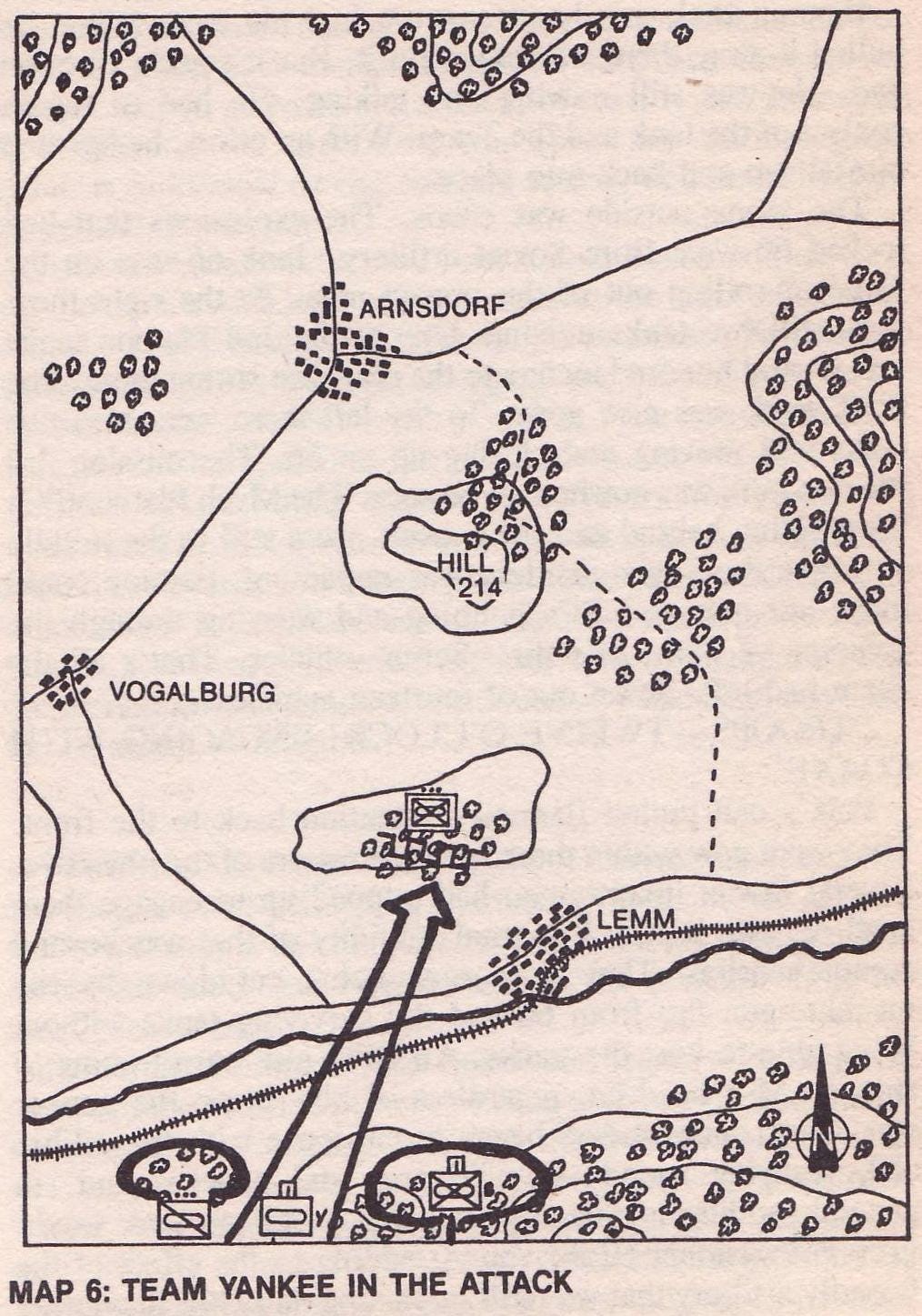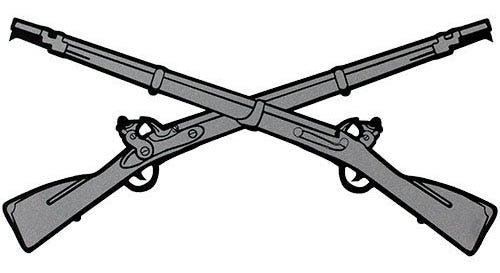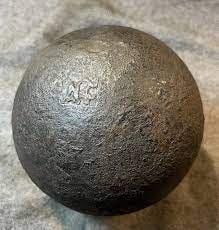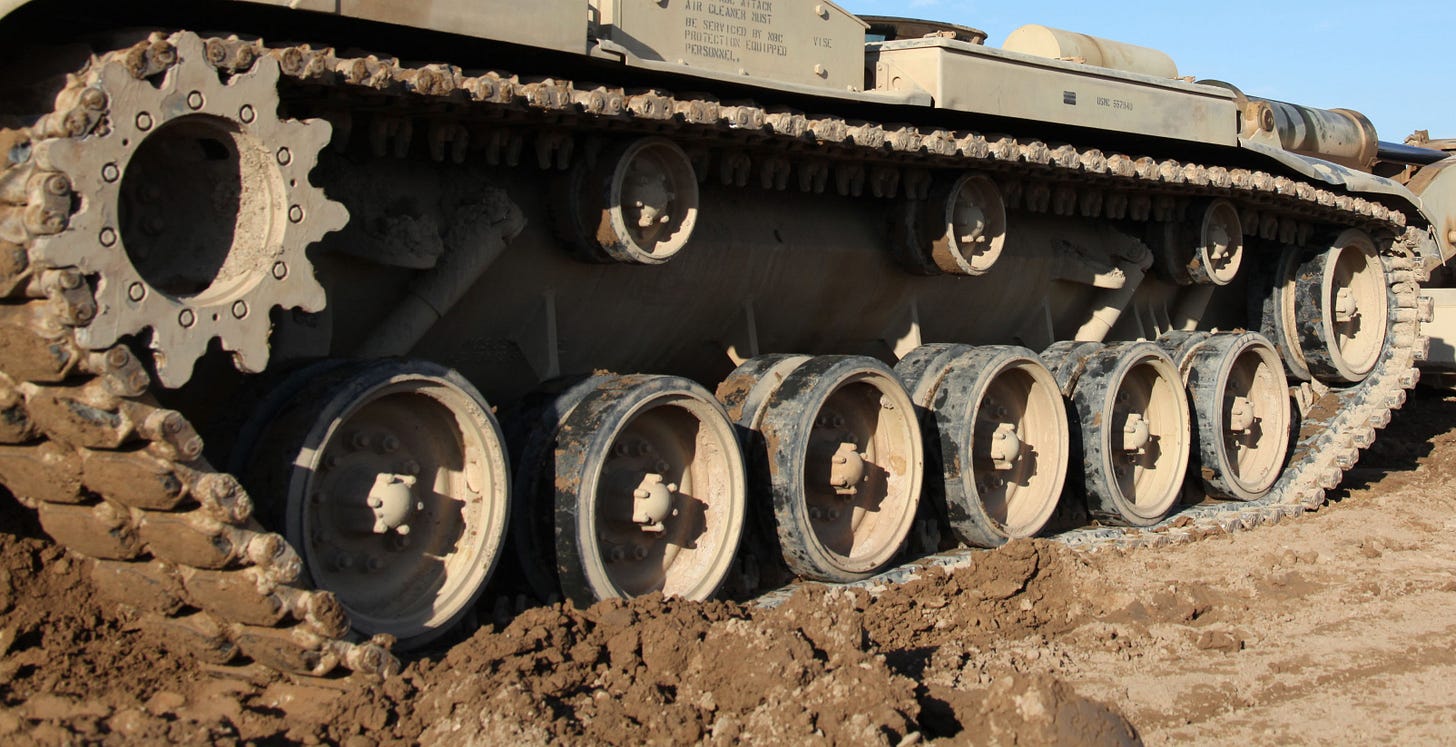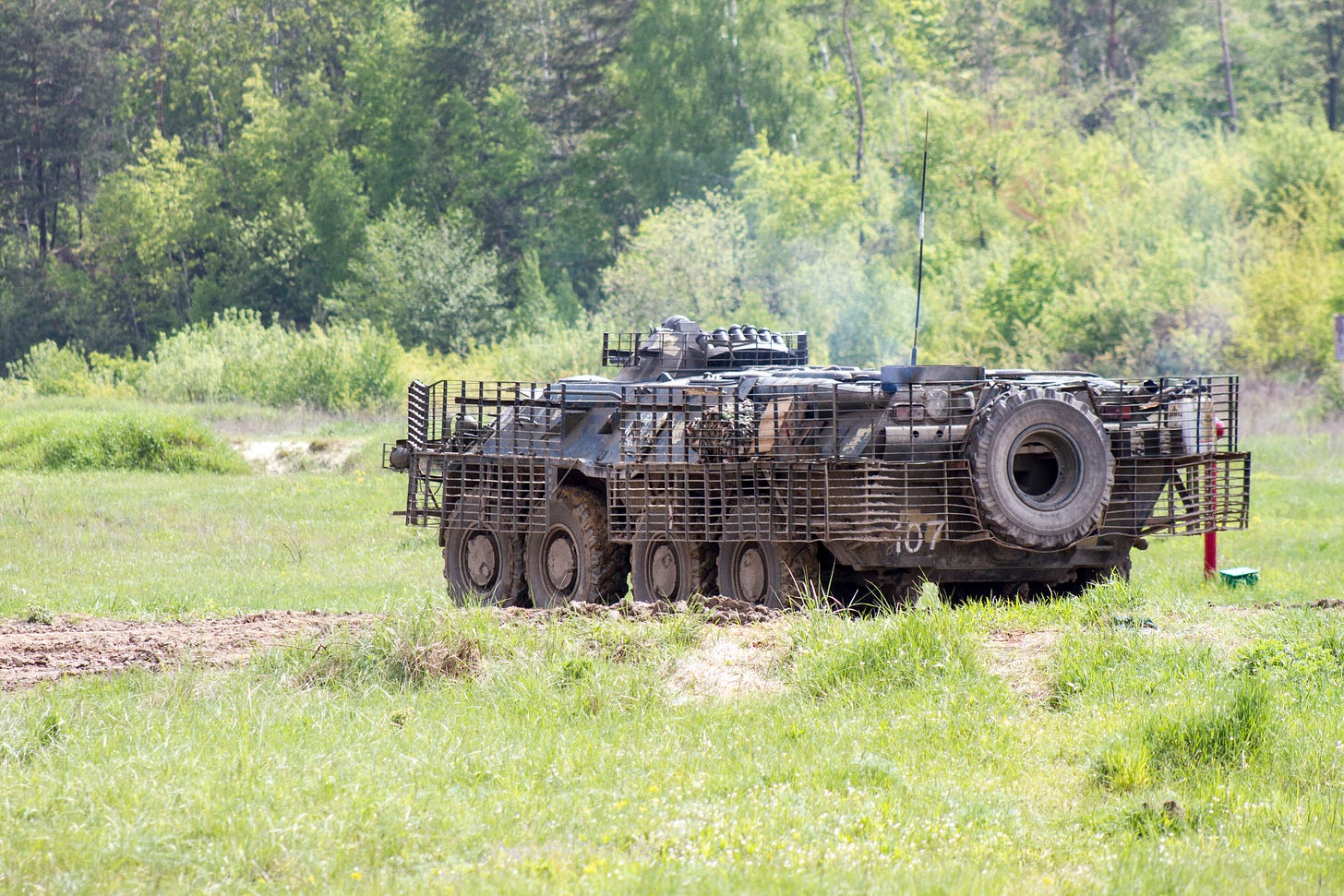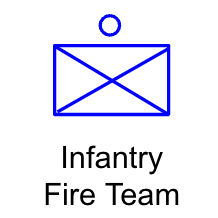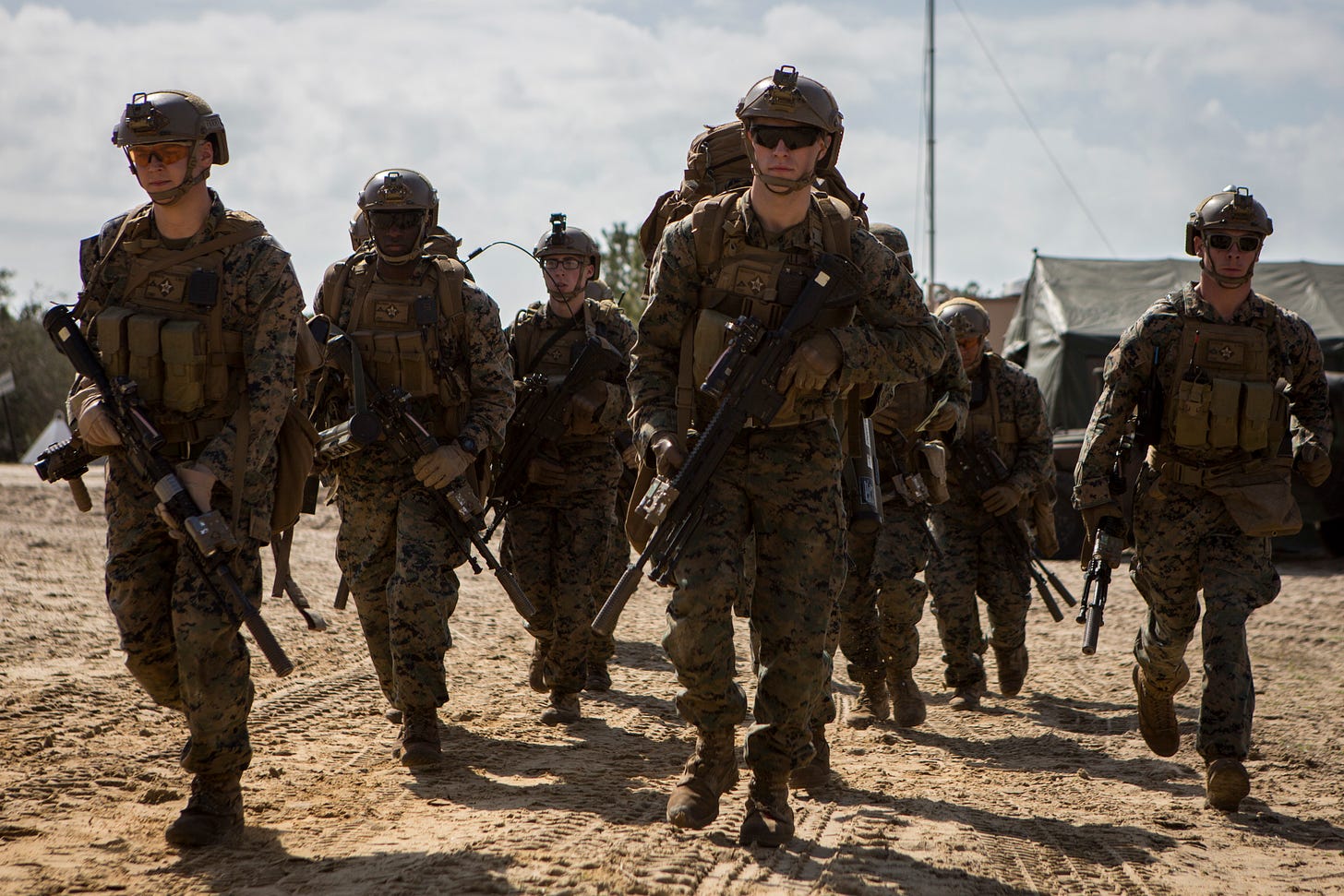Decoding NATO Military Symbology: The Universal Language of Defense
What do all of those symbols mean?
I’ve been using a lot of NATO military symbology lately. You’ve seen them before as the blue rectangles and red diamonds that you see below.
These symbols are surprisingly easy to understand once you know some basics. After all, they have to be easy to understand across the different cultures of 31 NATO countries.
Frame
It all starts with the frame.
BLUE is Friendly. RED is Hostile. GREEN is Neutral (Or sometimes host nation) and YELLOW is unknown.
Occasionally you will see the boxes filled in.
If you have ever heard the term “Green on Blue” used to describe Afghan forces attacking coalition partners, this is where it comes from. Blue denotes friendly forces. Green denotes neutral or host nation forces.
In some older books or manuals, you may see the frame rendered in double boxes for hostile forces. You can find this in the Harold Coyle novel Team Yankee.
You can see this in the Harold Coyle Book Team Yankee.
Icon
Next comes the ICON. This indicates the type of unit that the frame represents. The most basic kind of symbol will be the icon for infantry.
This symbol is easy to remember. Think of it like two civil war era crossed rifles.
Calvary or reconnaissance is represented by a box with a slash.
Think of it like a cavalry saber.
Artillery is a single, round, filled in circle.
Much like a cannonball.
Armor is represented by an oval icon.
Kind of like the caterpillar tracks of a tank.
If you combine the crossed rifles of infantry with the ovals of a tank, you get mechanized infantry.
Or infantry that ride in tracked vehicles.
Engineers are easy. They are just an E.
These are the most popular and common symbols you might encounter. The list of symbols actually fills an entire book: FM 1-02.2 (PDF) and contains symbols for everything from pack animals.
To satellites.
Modifiers
Modifiers provide additional capability information for a unit. They can be placed above sector one or below sector 2.
For example, Air assault capable infantry would be given a rotor below sector 2.
An infantry mortar would be given a circle with an arrow in sector 1.
Or an threat BTR would be given the wheeled/motorized modifier below sector 2.
The full list of modifiers and positions can be found in FM 1-02.2 Chapter 2- 21 (PDF)
Echelon Amplifiers
Amplifiers change the “echelon” or size of a formation.
The amplifier goes above the frame. In the case below, the unit is a unit of infantry as seen by the X in the blue box. But its amplifier is of a fire team - usually 4 to 5 soldiers lead by a senior private or a junior sergeant.
Fire Team
Squad
If we color in the dot, we get two or three fire teams, normally lead by a staff NCO for a total of 9 to 13 soldiers.
Section
Two dots equates to a section. This is typically used as an administrative organization, such as a headquarters “section.” So this is usually less than platoon size but bigger than a squad or roughly 10-25 soldiers. This term is also used when vehicles are split off from the main unit. For example, two M1 Tanks split off from their platoon are a section.
Platoon
Platoons have 3 dots. They are usually composed of 30-50 soldiers and lead by a junior officer. They are typically the smallest maneuver unit and can control about 100-300 meters of front.
Company / Battery / Squadron / Company Team
Companies have a vertical line above the frame. A company is composed of 100-140 soldiers or roughly 3-4 platoons. It’s typically led by a company grade officer or senior level lieutenant. It’s normally the smallest organization that can be used to accomplish a task like an attack or defense, depending on the unit they are facing. They can control about 300-1200 meters of front. Note that cavalry companies are called “squadrons” and artillery companies are called “batteries,”
If you add a box over the company amplifier, you have a company team. Company teams have additional units as attachments that give them addition capabilities. One of the most popular might be detaching platoon of infantry to support a armor (tank) company. This would indicate a company team.
Battalion / Battalion Task Force
The next step up from a company is a battalion. This contains two vertical lines in the echelon amplifier. The battalion is typically composed of 4-5 companies or 400-800 soldiers. It has the ability to perform some logistics and sustainment organically, but must rely on higher echelons for more advanced support. This is typically lead by a field grade officer. It can cover between 1,500 and 6,000 meters of front.
If you add a box over the battalion amplifier, you have a battalion task force. A battalion task force is a battalion that has been augmented with additional capability beyond their organic units. This may include additional armor, engineering or transportation assets that are needed to accomplish a specific mission or tasks. Oftentimes they are named “Task Force _____.” With the task force name usually coming from their lineage, leader, unit history or location. For example, the famous Task Force Smith during the initial days of the Korean war or a National Guard unit from Florida might call themselves “Task Force Gator” when they deploy overseas for a rotation to Kosovo.
Regiment
Three lines in the modifier equal a regiment, which is composed of two or three battalions and anywhere between 2,500 and 5,000 soldiers. Fighting regiments used to be more common when units were all composed of the same type of fighting force. For example, a historical infantry regiment would just contain infantry and support assets, with few attachments of different types. They can theoretically hold between 3,000 to 9,000 of front although this is a more historical number.
Most countries have moved toward a more flexible brigade based structure, which contains multiple types of units. The US Army typically only uses regiments for training commands or historical affiliation. The US Marine Corps still uses regiments. They are typically commanded by a field grade officer.
Brigade
Brigades contain an X as the echelon amplifier and are typically between 2,500 and 5,000 troops. They differer from regiments by holding multiple units of different types. They are also the smallest unit that can deploy and sustain independently, at least for a limited duration. Some brigades operate independently and are not connected with a division, often called a “Separate brigade.” Brigades are typically the main building blocks of any kind of sustained military operation.
Historically, brigades were made up of two or more regiments. In modern militaries, brigades typically contain 5-6 battalions of infantry, armor, artillery, cavalry, signal, special troops, avaition and transportation assets. A brigade can hold 2,000 to 6,000 meters of front.
Note, in some insurgencies, the word “Brigade” may have symbolic, historical or aspirational significance. So a “brigade” of religious militia may not follow the same conventions as a traditional military structure. They are typically commanded by a field grade officer. Separate brigades are often commanded by a general officer.
Division
Divisions are symbolized by two X’s or “XX.” They contain 3 to 4 brigades or roughly 10,000-15,000 troops. These formations can deploy independently as expeditionary forces and contain everything they need, from postal platoons to water purification to vehicle maintenance, that an army needs to fight and sustain. Divisions can hold 5-15 kilometers of front and are typically used for large scale operations. They are lead by a general officer.
There are two more levels above divisions - Corps (XXX), Armies(XXXX), Fronts (XXXXX) and Combatant Command Region (XXXXXX).
A corps typically contains multiple divisions and several separate brigades. Armies contain multiple corps. Fronts contain multiple armies. Combatant Command Regions contain multiple army groups. It is highly unlikely that you will ever see units of this size outside of a map of World War II. The units would be lead by high-ranking general officers.
Naming Conventions
Typically, a unit has its name to the left of the frame, and its next echelon to the right of the frame. For example, this unit is B Co, 2/14th Infantry.
Although for some higher units at the brigade or division level, you might just use the right hand side of the box. For example, the 34th Infantry Division is a National Guard unit that has brigades in Minnesota, Iowa and Wisconsin. They can be represented with just the division code on the right of the frame.
So from what you have learned, what can you tell about the unit below?
The Frame indicates that it is a friendly unit. The Icon symbolizes infantry. The Modifier below Sector 2 indicates that it is air assault capable. The Echelon Amplifier indicates that it is a company. The “A Co” indicates “Company A” or “Alpha Company.” The 3/187 is the next higher unit, which is 3rd battalion, 187th Infantry Regiment. Note that regiment in this case is a historical affiliation. This particular unit is actually under the 3rd Brigade of the 101st Airborne, although that wouldn’t normally be listed.
Understanding NATO military symbology provides a valuable insight into the organization and capabilities of military units. This knowledge is essential for military personnel, analysts, and enthusiasts to interpret and communicate complex information effectively.
With a grasp of this symbology, we can better comprehend and appreciate the complexities of military operations.
A cheat sheet in PDF form is available for paid subscribers below. If you are military and can’t afford a subscription, email me and I will get you a copy.








